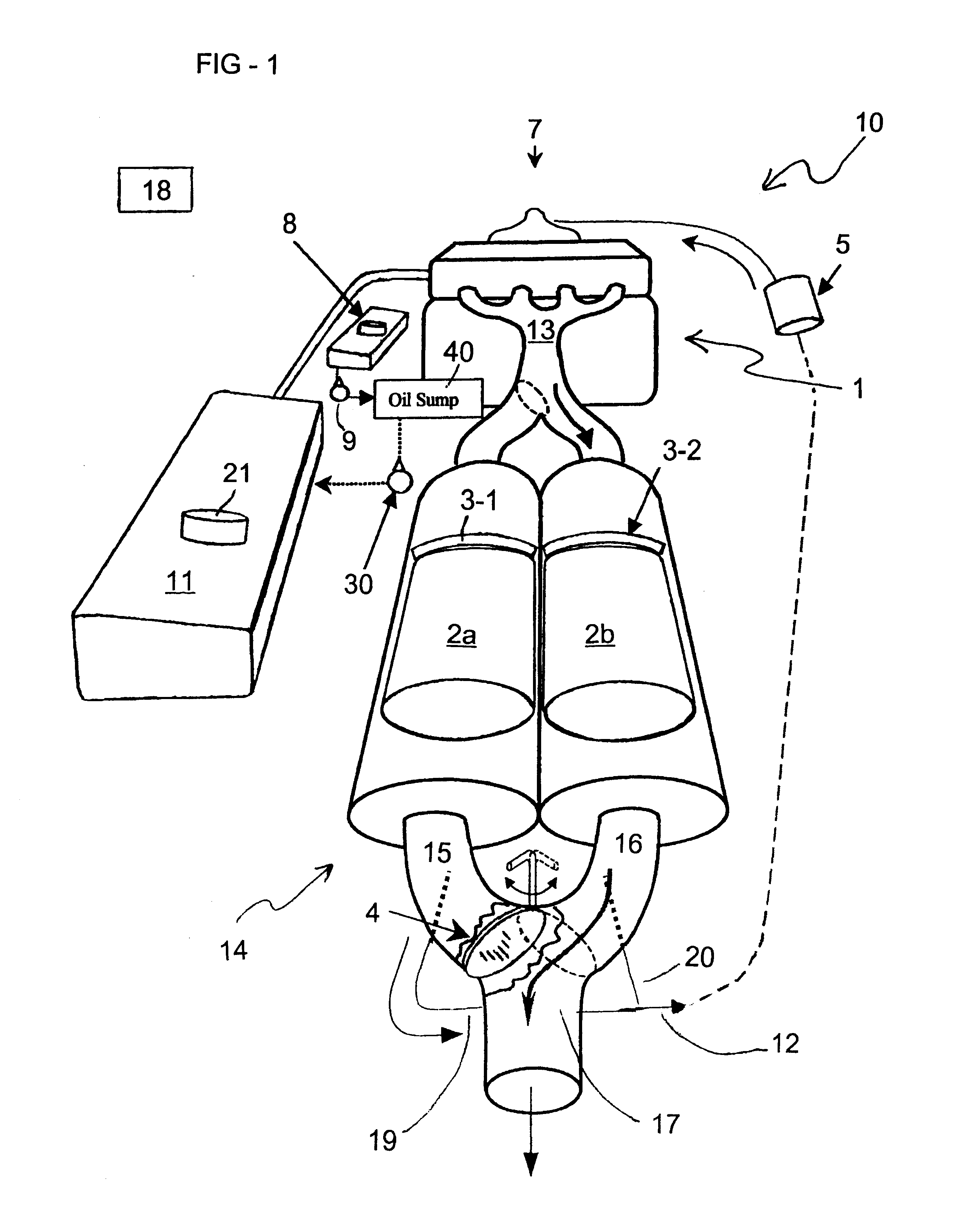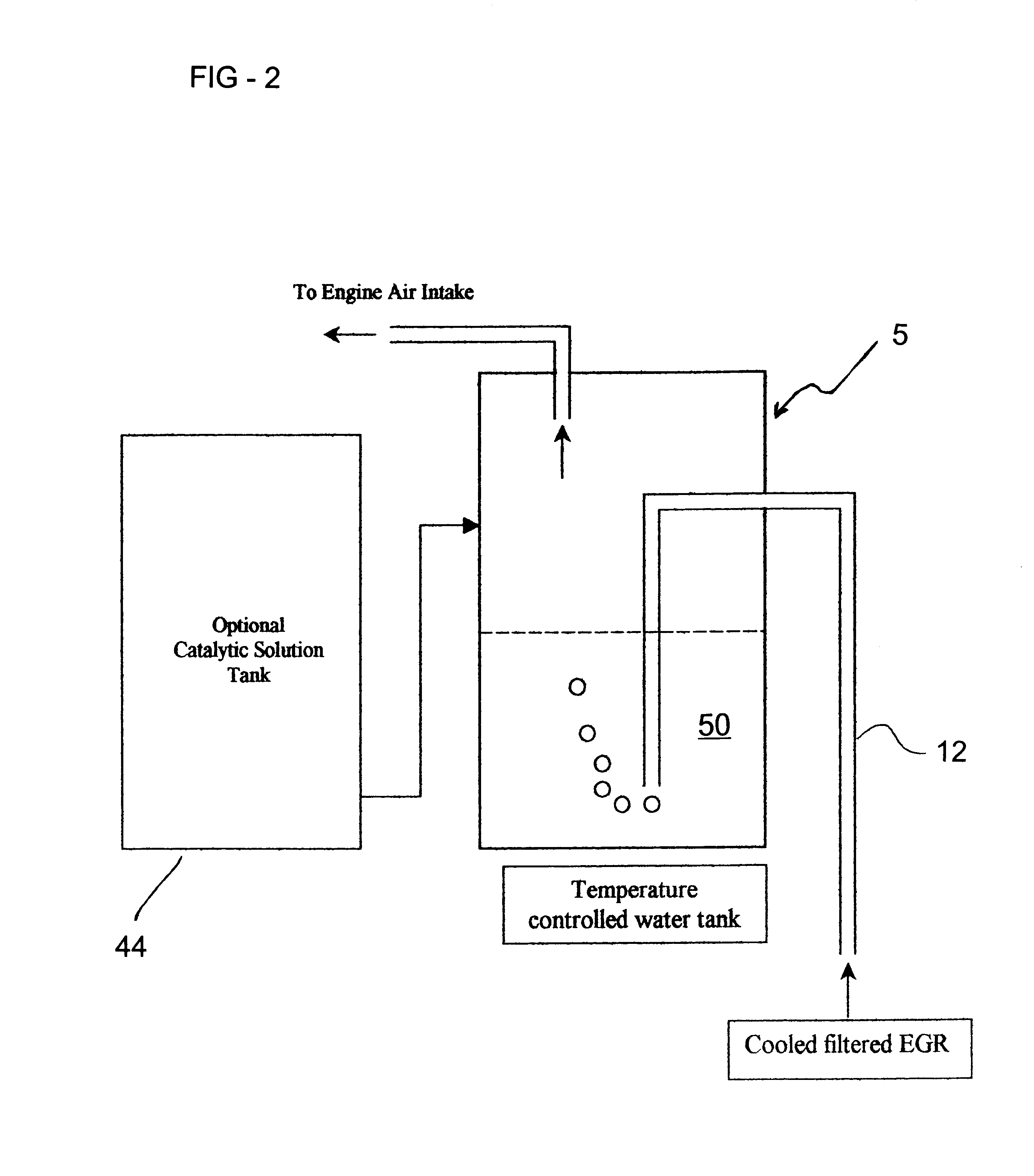System for and methods of operating diesel engines to reduce harmful exhaust emissions and to improve engine lubrication
a technology of engine lubrication and exhaust emissions, which is applied in the direction of machines/engines, mechanical equipment, and non-fuel substance addition to fuel, etc., can solve the problems that the engine combustion system alone cannot meet future diesel emissions standards, and the toxic to human health of finely dispersed particles, etc., to facilitate dpf regeneration, reduce nox formation, and anti-wear properties
- Summary
- Abstract
- Description
- Claims
- Application Information
AI Technical Summary
Benefits of technology
Problems solved by technology
Method used
Image
Examples
example 1
[0048]Referring to FIG. 1, dual filters, with each filter made of Coming Diesel particulate filter, 5.66 in. diameter×6 in. long, 100 cells / sq. in. was canned in the conventional manner, with an electric coil installed in front of the filter.
[0049]The flow of exhaust gases and EGR gas was controlled by the diverter valve in the exhaust system, as shown in FIG. 1. EGR gases from the DPF are fed into the air-intake port via the step of bubbling through the water solution in the EGR-accumulator tank, which is filled with 2 liters of water containing 50 grams of copper acetate, and a trace of ethylene glycol to prevent freezing at cold temperatures.
[0050]All the features of this invention process were installed on a Mercedes 300 D with a diesel engine, 3.0 liters of engine displacement. The test fuel was a regular diesel fuel with 300-400 ppm sulfur present in the fuel. The engine oil used was a regular engine lubricant, 10W-40 viscosity suitable for diesel engines, to which the engine...
PUM
 Login to View More
Login to View More Abstract
Description
Claims
Application Information
 Login to View More
Login to View More - R&D
- Intellectual Property
- Life Sciences
- Materials
- Tech Scout
- Unparalleled Data Quality
- Higher Quality Content
- 60% Fewer Hallucinations
Browse by: Latest US Patents, China's latest patents, Technical Efficacy Thesaurus, Application Domain, Technology Topic, Popular Technical Reports.
© 2025 PatSnap. All rights reserved.Legal|Privacy policy|Modern Slavery Act Transparency Statement|Sitemap|About US| Contact US: help@patsnap.com



